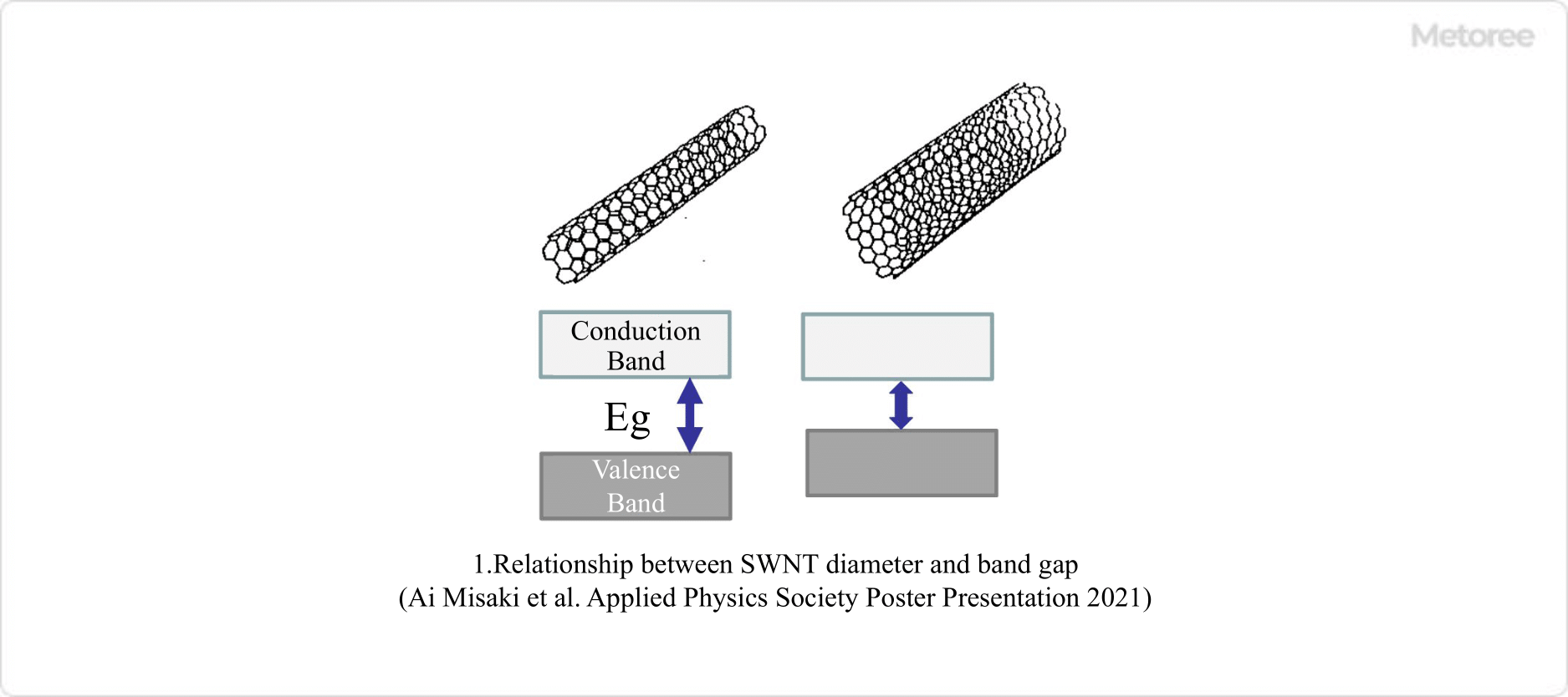What is a Nanotube?
A nanotube is a microscopic material characterized by its tubular structure.
They are called nanotubes because their size is on the nanometer scale. In general, it refers to carbon nanotubes, which are composed of carbon.
A carbon nanotube consists of a cylindrically rounded sheet of benzene rings that are laid without gaps between them. It is possible to insert even thinner tubes in this cylinder, single-walled nanotubes (SWNTs) for one layer, and multi-walled nanotubes (MWNT: multi-walled carbon nanotube).
Uses of Nanotubes
Carbon nanotubes are frequently utilized in nanotechnology. Due to their high conductivity and aspect ratio, they can form networks of conductive tubes.
Their strong chemical bonding also allows them to increase mechanical strength when used with polymers, making them very good heat conductive materials. Taking advantage of its electronic and mechanical properties, it is expected to be used in a wide range of fields as a fundamental material for nanotechnology. Examples of products in which nanotubes have already been applied include tennis rackets, bicycle frames, speakers, headphones, and electric wires.
Principle of Nanotubes
Carbon nanotubes are chemically stable and extremely light, with a density about half that of aluminum. Nevertheless, they are 20 times stronger than steel, 1,000 times more current density resistant than copper, and have higher thermal conductivity than copper.
1. Single-Walled Carbon Nanotubes (SWNTs)

Single-walled carbon nanotubes (SWNTs) comprise seamless cylindrical materials formed from a single layer of graphene. The electrical conductivity of SWNTs shows metallic or semiconducting behavior as the bandgap changes depending on the winding method and diameter of the graphene sheet that forms the tube.
2. Double-Walled Carbon Nanotubes (DWNTs)

DWNTs (double-walled carbon nanotubes) have a band gap suitable for field-effect transistors. However, their electrical behavior is very complex, limiting their use to fields such as thin-film electronics. In addition, selective functionalization of the outer layer enables the application of contrast agents and therapeutic agents in biological systems.
3. Multi-Walled Carbon Nanotubes (MWNTs)
Multi-walled carbon nanotubes (MWNTs) are easier to mass-produce and less expensive per unit than their single-walled counterparts (SWNTs). While functionalization usually results in the cleavage of carbon double bonds and changes in properties, multi-walled carbon nanotubes can retain their original properties because only the outer layers are modified.
To introduce new properties for specific applications, it is necessary to modify the surface of carbon nanotubes to make them soluble in various solvents, enhance their functionality, give them dispersibility, compatibility, and so on. This is possible by causing an oxidation reaction using acid, ozone, plasma, etc. For example, when a hydroxyl group or a carboxyl group is generated, polarity is created, solubility can be obtained and affinity with various polymers can be increased.
Other Information on Nanotubes
1. Practical Application of Nanotubes
Nanotubes can be synthesized by laser ablation, arc discharge, and chemical vapor deposition (CVD). Among these approaches, the CVD method is the most feasible for industrial mass production.

The super growth method is an extremely innovative synthesis method in which an extremely small amount of water (on the order of ppm) is added to the synthesis atmosphere of the CVD method, resulting in a catalyst lifetime of tens of minutes instead of the usual several seconds. SWCNTs can be synthesized from very small amounts of catalyst.
Specifically compared to conventional CNTs, CNTs obtained by the super growth method are characterized by high aspect ratio, high purity, and large surface area, and are expected to be applied to new functional materials with new functions and features. Specifically, it is expected to be applied to innovative materials such as high-performance rubber materials and high thermal conductivity materials, and demand for these materials is expected to grow.
2. Disadvantages of Nanotubes
Carbon nanotubes have been pointed out to have carcinogenic and other risks when inhaled by the human body.
Another issue is that carbon nanotubes are more expensive than other materials. It is hoped that the establishment of mass production technology will lead to lower prices in the future.